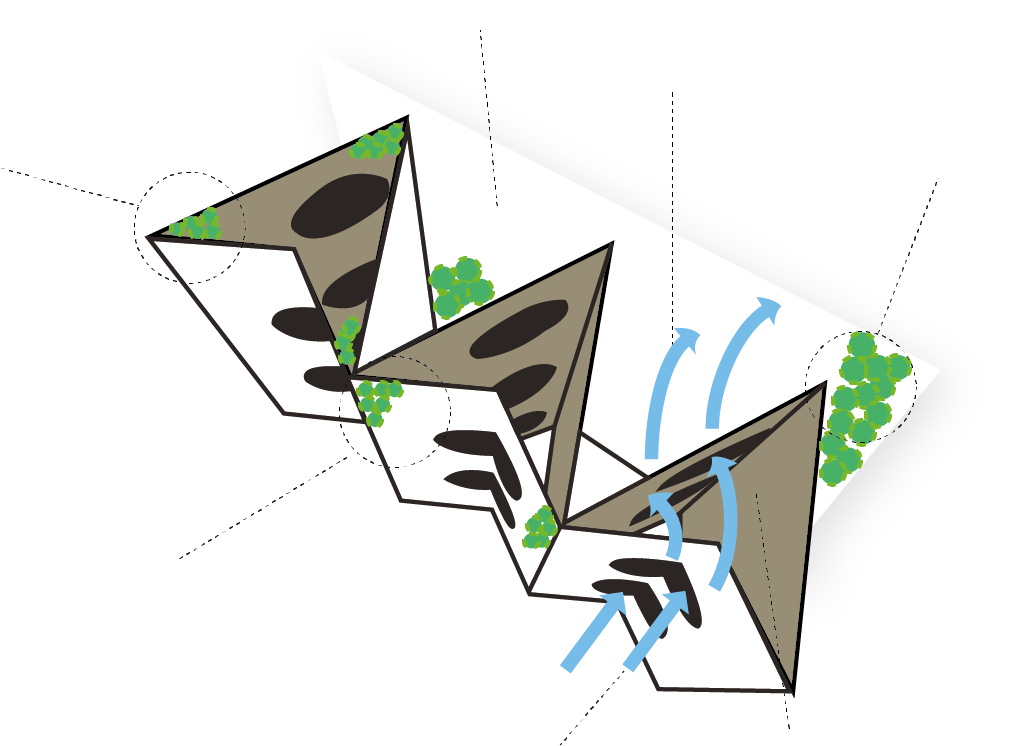Toolbox
Troubleshooting
Troubleshooting
Troubleshooting Airflow
Troubleshooting
Andreae Filters load from back to front, eliminating the face-loading effect
The working principle of an Andreae Filter is such that particulates are captured by impaction on the face of the filter, then pulled through the openings and impacted again on the back wall of the filter, then pulled through the baffle to impact again on the back of the front wall and ultimately collect in the deep holding pockets out of the air stream.
Because of the accordion shape and evenly spaced holes, the airflow is
evenly distributed over the whole extraction surface of the booth, the static pressure remains low and the airflow stays constant during the loading phase.
Other synthetic layers filters must be replaced regularly to ensure efficient operations. Clogged filters redirect air to a different path of least resistance, which will effect uniform airflow in the booth. Furthermore, this higher static causes the exhaust fan to reduce the amount of air exhausted
Polyester Exhaust Filter
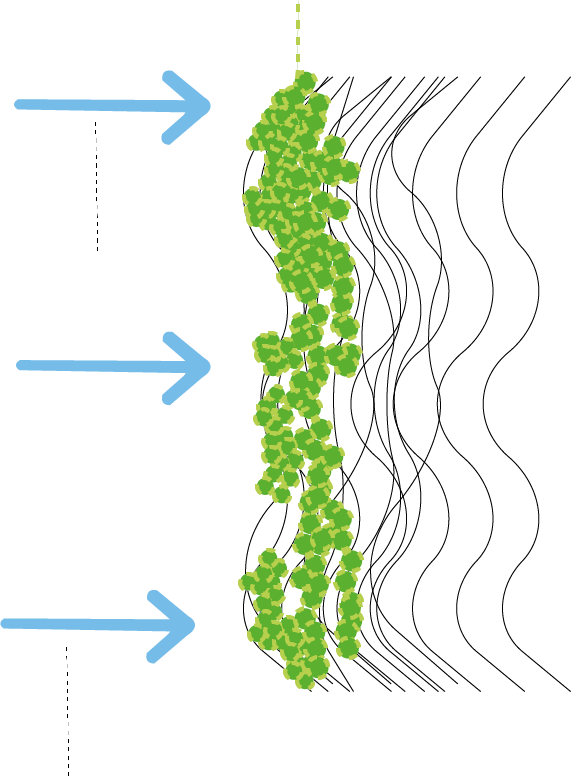
Andreae Filters have 3-5x greater holding capacity than fibrous and mesh filters, resulting in longer service life, reduced waste and less down time during change outs.
Fibrous and mesh filters tend to face load (collect particles on the surface of the filter). The face-loading effect causes uneven airflow to occur at various places along the exhaust wall. As a result, filter life is greatly reduced.
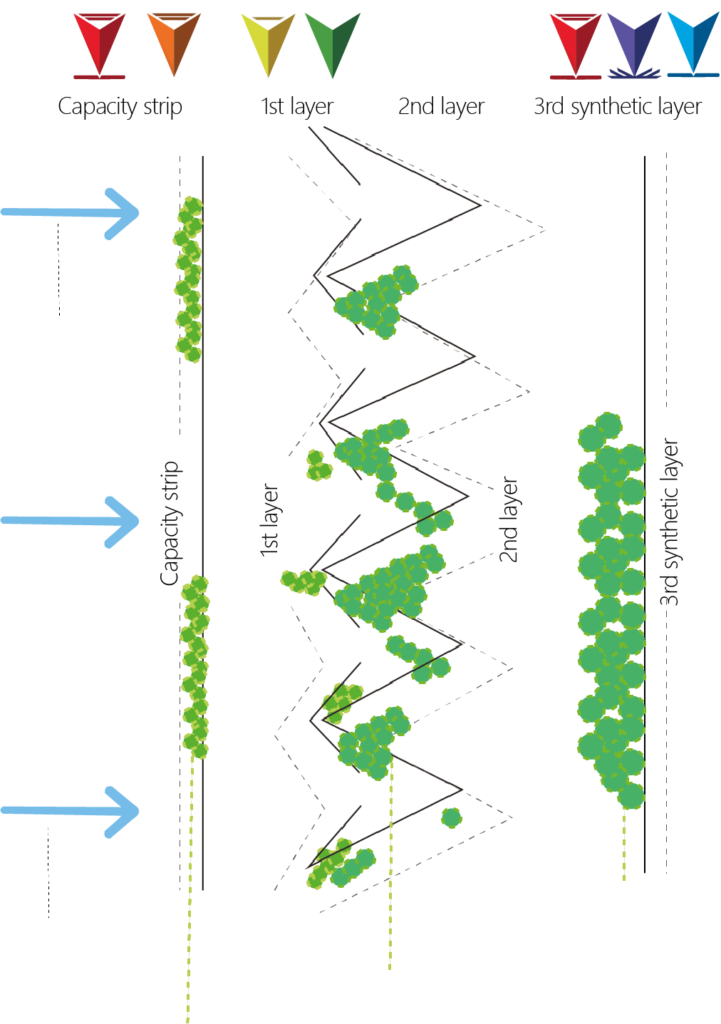
Troubleshooting
When to change exhaust filters
Method 1 - More cost efficient
Using a velocity meter for a more cost efficient method to determine the high (red) mark.
1. Measure the velocity inside the booth when the blower is turned on and the filters are new (i.e. at the green mark). According to OSHA regulations the velocity should be at least 100 ft/min (0.5m/s) for most cross draft spray booths. You should refer to the regulations to determine what the velocity would be for your booth design.
2. If the velocity is less than that required by OSHA, you should ask a qualified, certified electrician to increase the fan rotation until you attain at least 100 ft/min. If you don’t have an electrician who can do this, call your spray booth vendor.
3. After you ensure that the initial velocity is more than 100 ft/min, slowly plug up the filters by placing small pieces of masking paper over the filters. Read the velocity inside the booth.
4. If the velocity was more than 100 ft/min at the green mark, you can keep building up resistance on the filters until the velocity drops to 100 ft/min. That would be the high level mark (red) at which you would need to change filters.
The recommended maximum pressure drop for an Andreae Filter is 0.51 in wc (128 Pa). However, an Andreae Filter can withstand a maximum pressure drop up to 1.03 in wc if the fan is capable.
Andreae filters encourages (and cautions) finishers to try to achieve the highest pressure possible to get the maximum life out of the filters.
Method 2
1. Replace all filters in the spray booth so that they are all new. Ensure that there are no gaps between the filters and the metal frames.
2. Read the manometer while the blower is turned off. If it does not read zero, then zero it by turning the “zero” knob in the appropriate direction.
3. Close the doors of the spray booth (if there are doors) and start the blower.
4. Wait until the level in the manometer stabilizes and place a green mark at that level. This is your “initial” level.
5. Please refer to the technical data sheet to know more about the pressure differential when the filters are loaded.
If you replace the filters when the level is one inch above the initial level, place a red mark exactly one inch higher than the green mark. For example, if the green mark is at 0.35 inch water column (in wc), place the red mark at 1.35 in wc.
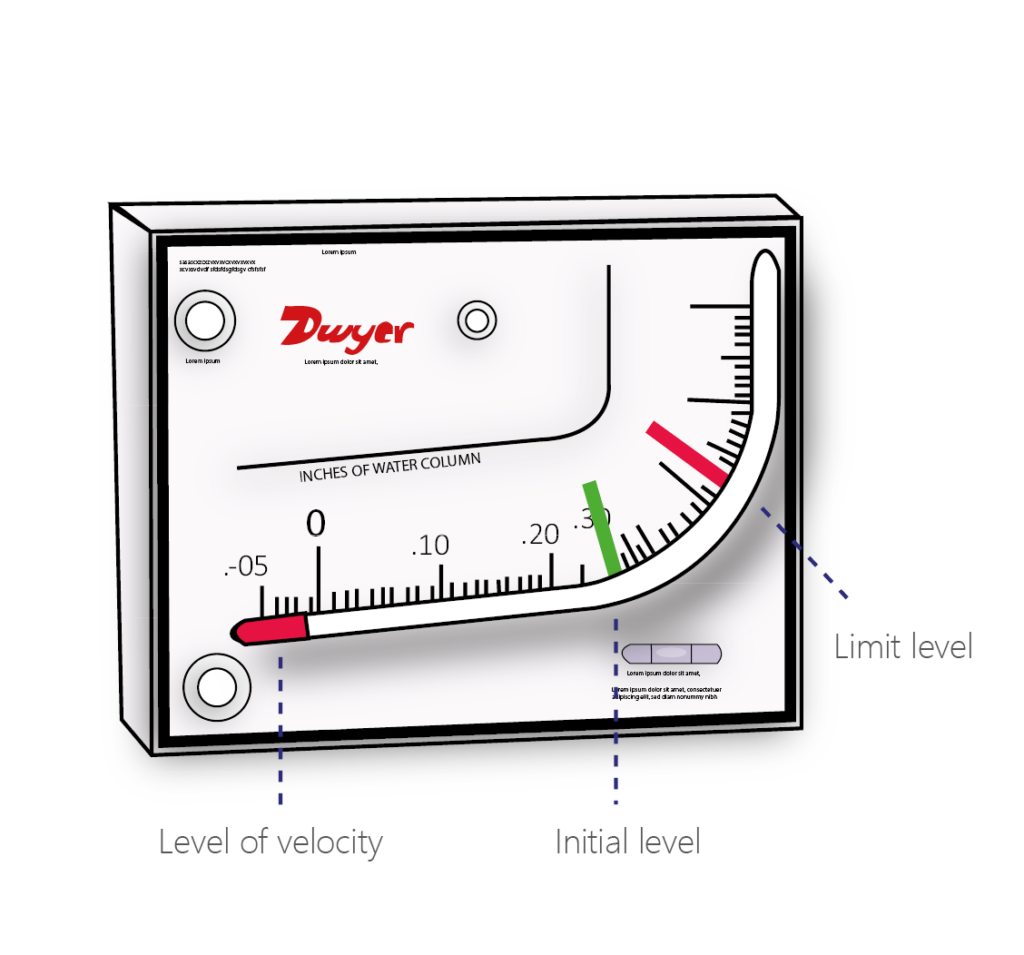
Troubleshooting
Air velocity
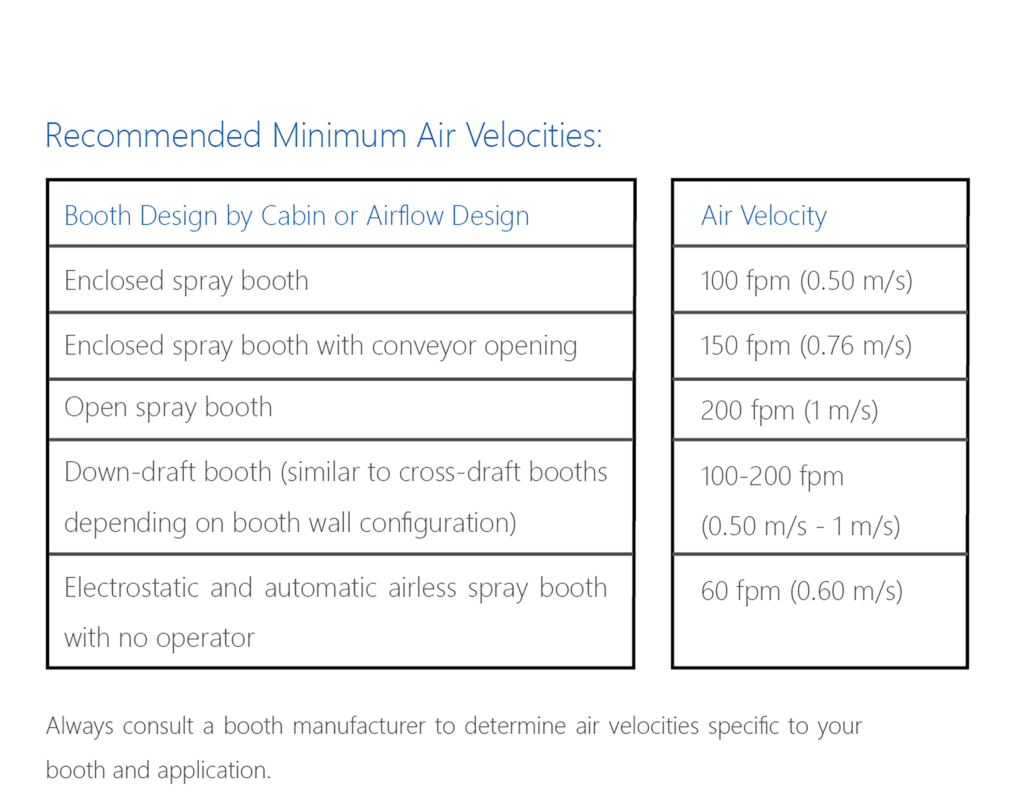
Recommended air velocity: 49-197 fpm (0.25-1.00 m/s)
Recommended maximum pressure drop: 0.51 in wc (128 Pa)
Possible up to 1.03 in wc (256 Pa) if the fan is capable
U.S. Labor Regulations 29CFR1926.66(b)(5)(i): Criteria for Design and Construction of Spray Booths, requires that the average air velocity over the open face of the booth or booth cross section during spraying be a minimum of 80 linear fpm. Electrostatic operations may be conducted at a minimum of 60 linear fpm.
Troubleshooting
Air Flow and Static Pressure
Managing airflow in a spray booth is not only critical in reducing combustible vapors but essential in maximizing coating delivery while directing overspray to the exhaust bank.
A spray booth requires a minimum velocity to carry overspray to the exhaust bank. The velocity possible to achieve is determined by the fan size. Draft requirements must factor in airflow losses from openings, filters and ductwork.
Static Pressure is defined as pressure exerted by liquid or gas (water or air) when bodies on which the pressure is exerted are not in motion.9 Airflow within a booth (or confined area) must overcome resistance from ductwork and filters when moving from one point to another. As filters capture particulate matter, airflow decreases causing static pressure to increase. It is recommended that exhaust filters be changed when the pressure drops 0.5 in wc. However, Andreae Filters can withstand a pressure drop up to 1.03 in wc.
